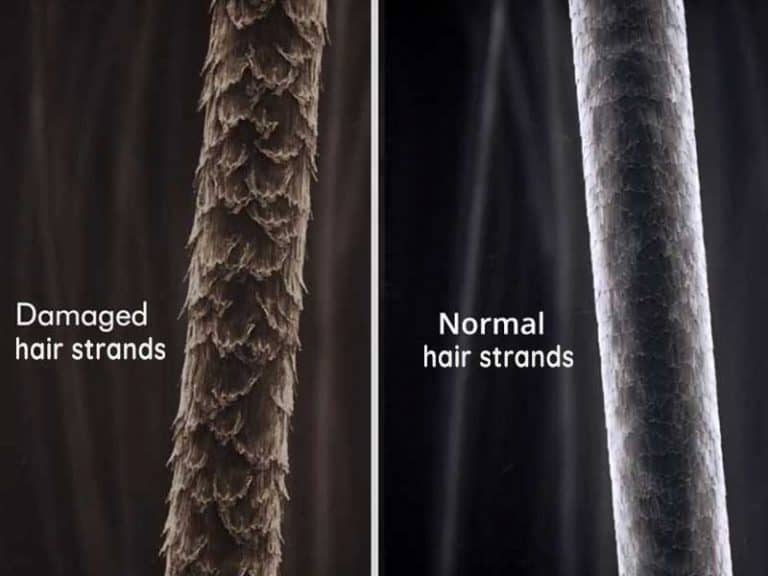How Too Identify and Stop Hair Loss
Table Of Content

Avoid using a bristle brush or fine-tooth comb, as these can cause breakage and pull out more hair. Both the CDC and the FDA warn against treating this common childhood condition on your own with non-prescription treatments. According to the American Academy of Dermatology, a typical loss is 50 to 100 strands per day. We’ll understand if you don’t count them all individually.
Can you tell if you are losing too much hair?
This cycle repeats itself for as long as the hair follicle remains active and continues to produce new hairs. Hairs in the telogen phase are also called “club hairs.” During this phase, a hair strand will be at rest as it prepares to detach from your scalp. About 8 to 9 percent of your hair is in this phase at any given time.
Hair fall 101: Everything you need to know about hair loss and how to stop it in its tracks - VOGUE India
Hair fall 101: Everything you need to know about hair loss and how to stop it in its tracks.
Posted: Tue, 17 Aug 2021 07:00:00 GMT [source]
Everything You Need to Know About Scalp Micropigmentation
That being said, abnormal shedding can be frustrating and is sometimes a sign that you're dealing with a health issue. Here, Anabel Kingsley, brand president and consultant trichologist at Philip Kingsley, sheds light on how much hair loss is normal. Lots of women see tufts in the drain or on the bathroom floor and freak out, but experts say that what’s happening is more than likely normal.
Certain Hairstyles
Anyone who notices that they are losing much more hair than they usually do should see their doctor to help determine the underlying cause. It is important to note that shedding is not the same as permanent hair loss. The hair should return to its previous thickness following the resolution of the underlying cause. Only about 1 to 2 percent of your hairs are in the catagen phase at any given time.

"Interestingly, [these two types of hair loss] still result from the same pathophysiology," she says. "Almost everyone will leave a little bit of hair in the shower drain," she says. Larger piles collecting in the drain, however, may signal a problem.
What is the Right Hair Brush for Wet Hair?

Typically, 100 to 150 strands a day is considered an average amount of hair loss from the root. That being said, both women and men can lose more or less than that, depending on their hair health and age. Any factors that influence the natural hair cycle will ultimately determine how many hairs you are losing per day. "Hair loss" refers to abnormal or excessive loss of hair beyond the typical shedding rate. However, "hair shedding" is a natural process of hair follicles going through their growth cycle, which involves the shedding old or resting hairs to make room for new hair growth. Hair shedding is a natural part of the hair growth cycle and often nothing to be alarmed about.
Average hair loss in men and women
“The good news is that as long as your system has recovered and you continue to take care of yourself, there’s no cause for concern,” says Kingsley. Your hair will stop falling out on its own and will grow back as usual. Maybe you brushed or detangled your hair one day and discovered that there were a few more stray hairs left behind in your paddle brush than the usual. Or maybe you glanced at the perimeter of your scalp one day and realized that your hairline has gotten slightly thinner since the last time you really took a look at it. Whether permanent or temporary, hair loss happens to the best of us—even celebrities. The authors of a more recent study from 2019 claim that 40% of women experience excessive hair shedding when shampooing their hair.
Traction alopecia is the result of environmental factors, such as wearing your hair in tight hairstyles, Agbai says. Telogen effluvium refers to the excessive shedding of hair follicles, and it occurs when hair follicles prematurely skip to the end of the hair growth cycle, she adds. The Cleveland Clinic states that hair shedding is part of your natural, balanced hair growth cycle, where some hairs grow out as others grow in.
This cause of hair loss can triple the amount of hair you lose each day, increasing the number of strands lost from around 100 to around 300, says Kingsley. Telogen effluvium occurs when a greater portion of your hairs are sent into the resting (aka telogen) and shedding phases than normal, she explains. Most healthy people lose up to 100 strands of hair per day.
The type and severity of hair loss you experience may determine the outcome (prognosis). Some types of hair loss are permanent, especially if you have damage to your hair follicles. For example, anagen and telogen shedding may stop with time. Managing any underlying health conditions improves hair loss. And early treatment of alopecia may reduce the speed of thinning and promote regrowth. A healthcare provider can tell you more about what to expect in your situation.
However, you have to follow directions exactly and use the product indefinitely. Don’t use this product if you’re pregnant, if you plan to get pregnant or if you’re breastfeeding (chestfeeding). Have you started on a new med lately and you're shedding more hair?
The shedding usually peaks about four months after giving birth. “If excessive hair shedding continues for longer than three months, seek the advice of a dermatologist or trichologist,” says Kingsley. Chronic hair loss can signify that something isn’t quite right internally. The most common causes of long-term hair loss are deficiencies in iron, vitamin D, and vitamin B12, as well as hypo or hyperthyroid complications. Fixing the underlying problem can help return your hair to its resilient former self.
There are over 100,000 hair follicles on every person’s head, and for new hairs to grow, old ones must fall out. At any given time, there are loose or already disconnected strands on your head, waiting for you to brush or wash your hair so that they can fall away. Because all the old strands fall away at once and during rigorous hair-care activity, it may seem like you’re losing a lot of hair, but the chances are that what you’re seeing is normal.
Comments
Post a Comment